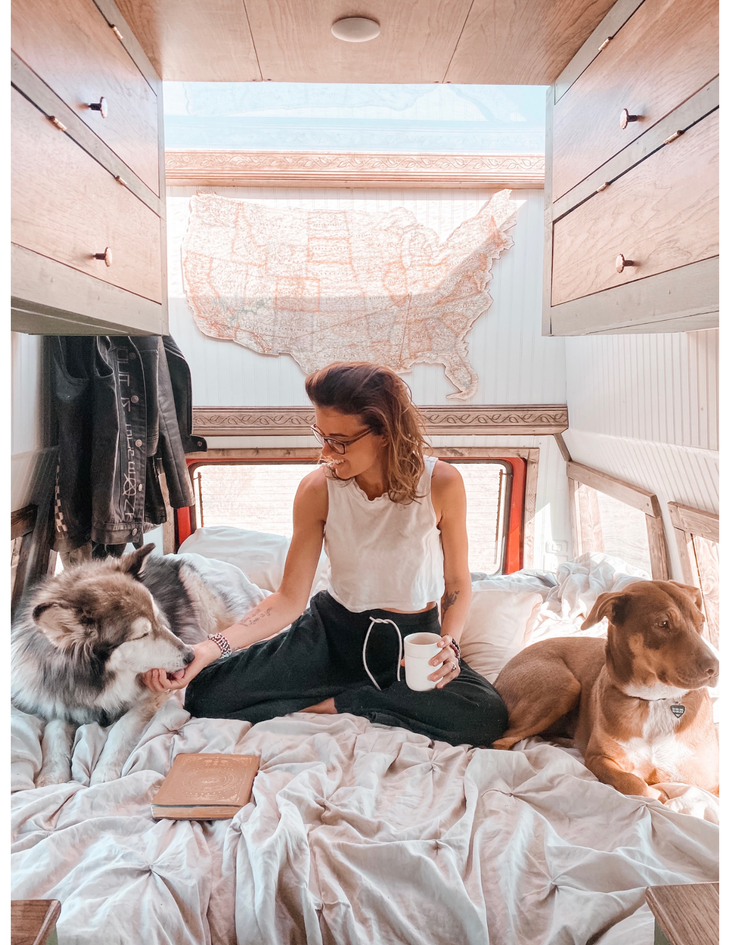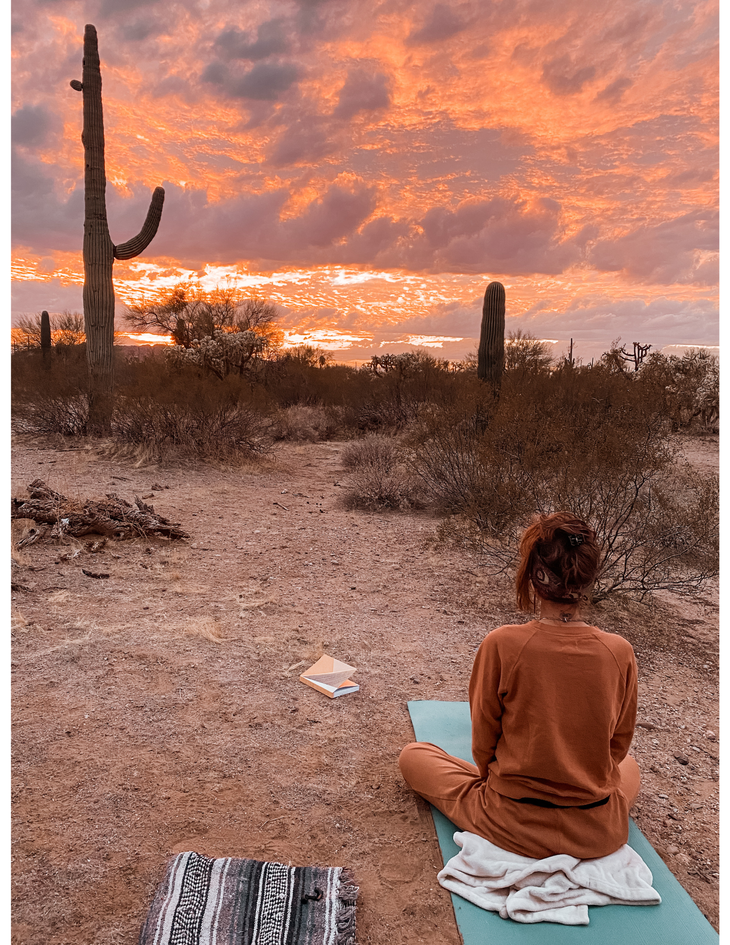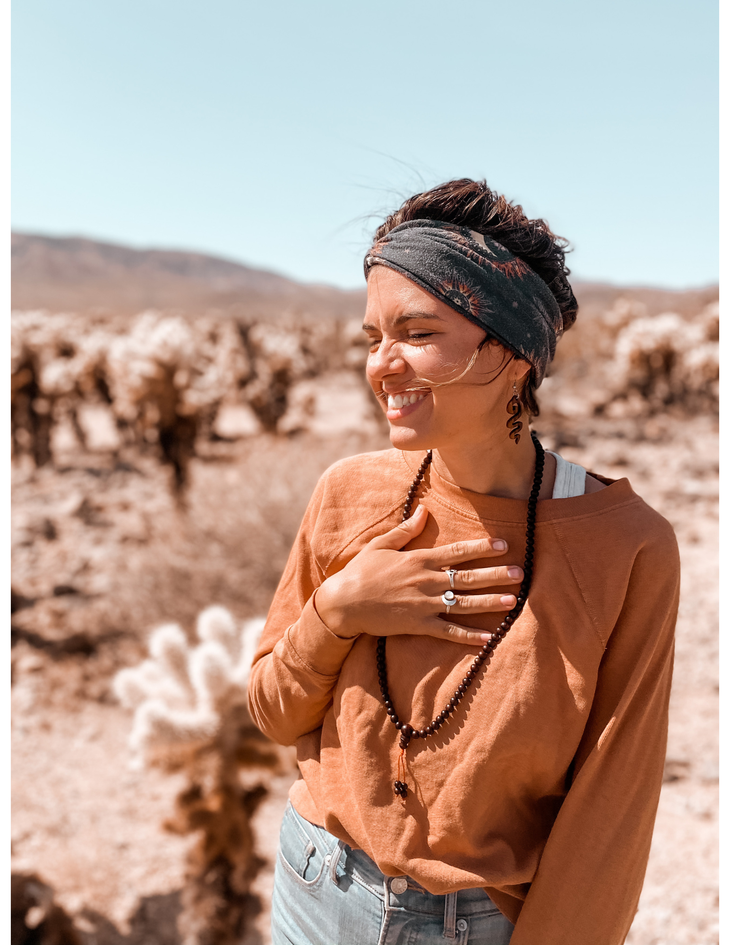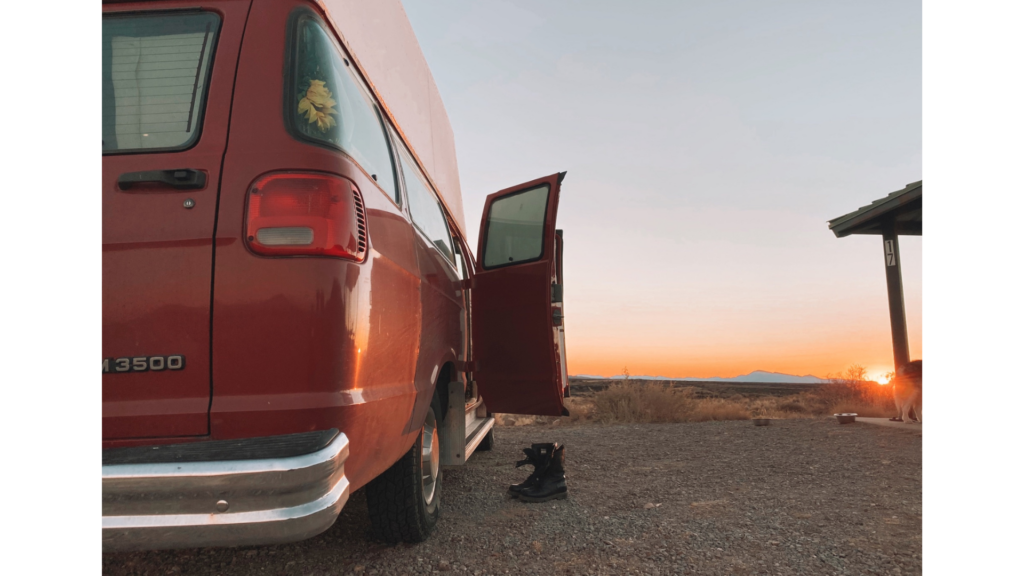“], “filter”: { “nextExceptions”: “img, blockquote, div”, “nextContainsExceptions”: “img, blockquote, a.btn, a.o-button”} }”>
Heading out the door? Read this article on the new Outside+ app available now on iOS devices for members!
>”,”name”:”in-content-cta”,”type”:”link”}}”>Download the app.
Back in the summer of 2020, my partner and I decided to put all our belongings in storage and commit to living in a van for a year. It took us six months to convert our 1997 Dodge Ram into a miniature home on wheels that would, we thought, create a suitable van life for the two of us and our two dogs.
Vagabonds at heart, we’d already done our fair share of traveling, both separately and together. As worldly as I believed myself to be, I felt ready for living in a van. After all, “van life” is often painted as a pinnacle of juvenile abandon, the modern manifestation of carefree counterculture. And, in a lot of ways, it is.
But we weren’t prepared for the experience of full-time nomadic living. He and I had already gone through all sorts of upheavals and transformations together, although this one was the biggest. We were often uncomfortable, isolated from others, and needing to do without.
I was a certified yoga teacher by the time we finally took off on the road, but I had no idea how much this lifestyle would inform my yoga practice and vice versa. Turns out, it was the yoga of inconvenience, of surrender, of living in the unknown. It happened less on a mat and more in quiet moments of resilience. It happened during mornings spent journaling by the ocean, excerpts of which I share below. It happened when plans fell through, when it was too cold to sleep, when I had to brush my teeth in a parking lot.
That’s where I learned. That’s where my practice started. Yoga teaches us how to be with what is. And out there, with no Wi-Fi and no real sense of control, there was nothing but what is.
I Learned to Experience Discomfort
I’d always had a distaste for discomfort. Any sort of dissonance triggered my already revved-up nervous system into overdrive. I believe it’s why I always preferred yin over vinyasa, dance music over punk, lifestyle over politics. The more frictionless I could make my surroundings, the safer I felt.
With van life, there was a lot of friction. There’s never enough space. Nothing ever feels clean. Sometimes you have to choose between staying warm at night by running your heater or being able to make coffee the next morning.
One of the more superficial examples of this type of sacrifice is the consistent lack of a hot shower. I remember one chilly spring day, we were somewhere between San Diego and Encinitas, California, and neither of us had showered in a week. Due to COVID-related closures, our best option was outdoor beach showers—standing beneath cold water while surrounded by the 50-degree chill of the ocean breeze. When the uncomfortable option becomes the only option, it’s much easier to be brave.
In yoga, we’re taught tapas (self-discipline) and the idea that transformation arises through challenge. So often, I see wellness TikTokers toting the benefits of “leaving what doesn’t serve you.” But sometimes the thing that doesn’t “serve you” is the thing that teaches you resilience. There’s medicine in adversity and overcoming it. That freezing beach shower? I didn’t enjoy it. But I walked away finally clean and totally invigorated. The discomfort didn’t kill me. It woke me up. And I’ve since come to appreciate an everyday warm shower as a true luxury.
Likewise, tapas invites us to reframe our idea of challenge. Instead of resisting it, can we be curious about what lies on the other side? Through hardship, can we emerge with greater depth and resilience? If we can increase our tolerance to general unpleasantness, can we find ourselves better equipped to deal with the never-ending curveballs of human life? Tapas is a practice of humility and strength. And, as silly as it may seem, I learned that while sopping wet, cold, and feeling insanely alive on that beach in California.
“We’re in the middle of Tonto National Forest, nestled between the mountains. The colors are outstanding. The mornings are frigid. And I’m starting to lose my grip on the little things. I once heard that anything unexpected is trying to teach you something. That really stuck with me. It’s also helped to shift my perspective when things don’t seem to go my way. It feels funny even to use that phrase. ‘My way.’ Every living thing around me has its own reality that exists alongside mine. Why the hell should ‘my way’ be so important?”

I Learned to Let Go
Another cornerstone of yoga philosophy, aparigraha (nonattachment), asks us to loosen our grip on control, on outcomes, on the illusion that we’re in charge. I’ve always struggled with that. As a type-A person—eldest daughter, straight-A student, and generally successful in the category of “accomplishing things”—I had taught myself that doing and striving was the only way to get anywhere.
While living on the road during our year of van life, I had to let go. Not just once but over and over again. Not only was I sharing 65 square feet with three other beings, but there were so many variables at play influencing the entire trajectory of each day. Weather. Road closures. Broken parts. Fully booked campgrounds. Things rarely went as planned.
In turbulent situations, adaptability becomes a survival skill. I remember one week in southern Arizona, we were shoving off for California to visit friends. We had it all mapped out—timing, stops, even a dinner reservation. But the day before we were supposed to leave, our brake lines gave out. Just like that, we were stuck. A mechanic in Tucson told us it would take at least a week to get the part, maybe longer. I was frustrated. This wasn’t the plan.
But there was nowhere to go and so we stayed. We found a quiet pull-off near the Coronado National Forest and spent our days reading, stretching, and walking the dogs through mesquite brush and creosote. I cooked dinner on our tiny stove and watched the sunset blaze across the canyon. And somewhere in that stillness, I stopped feeling stuck. The trip to California would happen—just not on my timeline. And for now, this was where we were. It wasn’t what I expected, but it was enough.
There were plenty of moments like that—times when my choice wasn’t between good and bad but between resistance and surrender. A flat tire outside of San Francisco. Getting snowed in at a trailhead in Oregon. Nights in Walmart parking lots when all we wanted was a quiet patch of isolated land. Eventually, I stopped trying to force everything into a neat little box. I started asking instead: What’s here for me in this moment, even if it’s not what I planned?
Before I started practicing yoga, I equated letting go with giving up. How could I not care? But I’ve come to understand that nonattachment isn’t apathy. It’s about loving your life so much that you don’t want to miss it by looking too closely or squeezing too hard. If you’re so preoccupied with trying to manipulate and control your life, you simply can’t be as present to experience your life as you might otherwise.

Life is entropic—things naturally move toward disorder. And the reality is, you can either change your circumstances or change your mindset. Some days, you don’t have the option to do the first. So you surrender. You find your rhythm in the chaos. You flow with the current rather than pushing against it. And, oddly enough, it’s pretty freeing.
“We’re still in Arizona, in the Coronado National Forest again, waiting until we can find someone to fix the brake lines on our van that is also our home. It’s so beautiful here. Everything is out in the open, like no one has anything to hide. I feel like I have room to breathe out here, and it forces me to slow down. I have no choice but to slow down—where else would I go?”
I Learned That Challenge Can Be Beautiful
Living in a van, where I regularly found myself untethered from the structures I’d always leaned on, I started to see just how tightly I’d been clinging to the idea of certainty, to things unfolding “my way.” But in the moments when I did let go of the outcome and my resistance to it, it didn’t feel like giving up. It felt like softening. It meant trusting life could hold me even when I wasn’t the one steering.
That’s something I love about van life and traveling in general. You’re pulled out of your comfort zone and dropped into unfamiliar territory, where you can’t help but notice what’s around you because everything is new. It demands presence.
Though we’re no longer full-time road trippers, that sense of wonder from living in a van is something I try to carry with me. I want to experience each day fully, without rushing through or tuning out. Life is so beautiful, and I want to exist as close to that beauty as I can. In the van, Mother Earth was my home. And the more I stripped away the noise and excess, the closer I felt to her.
“So, how do I feel about living in a van so far? I feel challenged in ways I’ve never been before. I feel inspired, sore, frustrated, and alive. I’m almost always cold, but somehow it always ends up okay. I’m estranged and uncertain. I don’t have a real home, but I have everything I ever wanted with me. I have a full-frontal view of who I truly am—in more ways than one. I’m more in love than I’ve ever been. I feel more magical. When I wake up at night, I can tell what time it is by the position of the moon in the sky. There’s no option to mindlessly coast through life because I’m in intimate connection to it with every moment.”

RELATED: 9 Simple Stretches You Can Do From a Van, Car, Train, or Bus


